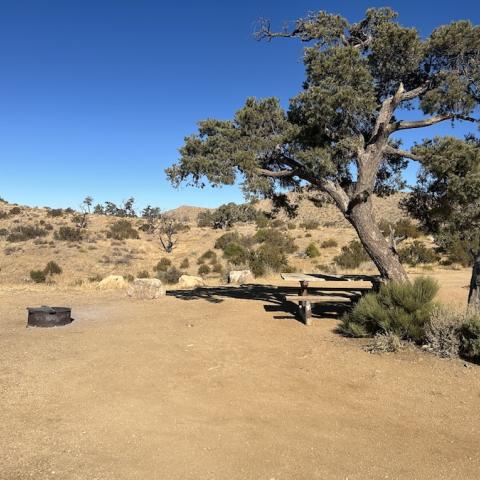
Retardent drops, like this one being made on the north end of the fire, were helping ground crews fighting the fire/Inciweb
High, gusting winds and hot temperatures were combining to drive the York Fire, a nearly 80,000-acre blaze ignited in Mojave National Preserve in California that was being fought by nearly 300 firefighters Monday.
The uncontained fire was spotted Friday afternoon in the preserve's New York Mountains and was burning in grass and understory. By Sunday afternoon the blaze's perimeter stretched outside of the preserve and into Nevada to the east. A cause had not yet been determined.
"Dealing with constant and unpredictable wind patterns can pose significant challenges for firefighting crews attempting to establish containment lines," read Sunday's fire report. "These types of winds can cause the fire to spread more rapidly and unpredictably. South winds are pushing the fire north. And the changing speeds along with the shifting directions from east to west can result in erratic fire behavior, causing the fire to advance. Currently, the fire is moving toward the Nevada State border."
Firefighters on the ground were aided by "Large and Very-Large" air tankers making retardent drops. Temperatures in excess of 100° Fahrenheit were making it "difficult for sustained physical efforts by firefighters and increases the reliance on aircraft and other equipment," the fire report said.
No structures were threatened by the wildfire, but the Ivanpah, Hart Mine Road, and Walking Box Ranch Roads were closed in Mojave National Preserve and Castle Mountains National Monument due to hazardous wildfire conditions and fire suppression operations. Additionally, Hole in the Wall, MidHills, and Black Canyon Group Campgrounds also were closed until further notice.
Smoke from the fire was reported to be reaching into Nevada and southern Utah.
Officials said a "combination of a wet winters combined with increasing levels of invasive grasses and mustards expanding across the Mojave and Colorado deserts" were responsible for Mojave National Preserve seeing an increase in fire frequency over the past decade. "This is a departure from historic norms, as Joshua Trees and other desert adapted plants have limited natural defenses or propagation techniques when fires occur around them," they added.
An example of the destructiveness of these fires was the 2020 Dome Fire that burned through the heart of the preserve's the Joshua tree forest.


 Support Essential Coverage of Essential Places
Support Essential Coverage of Essential Places






